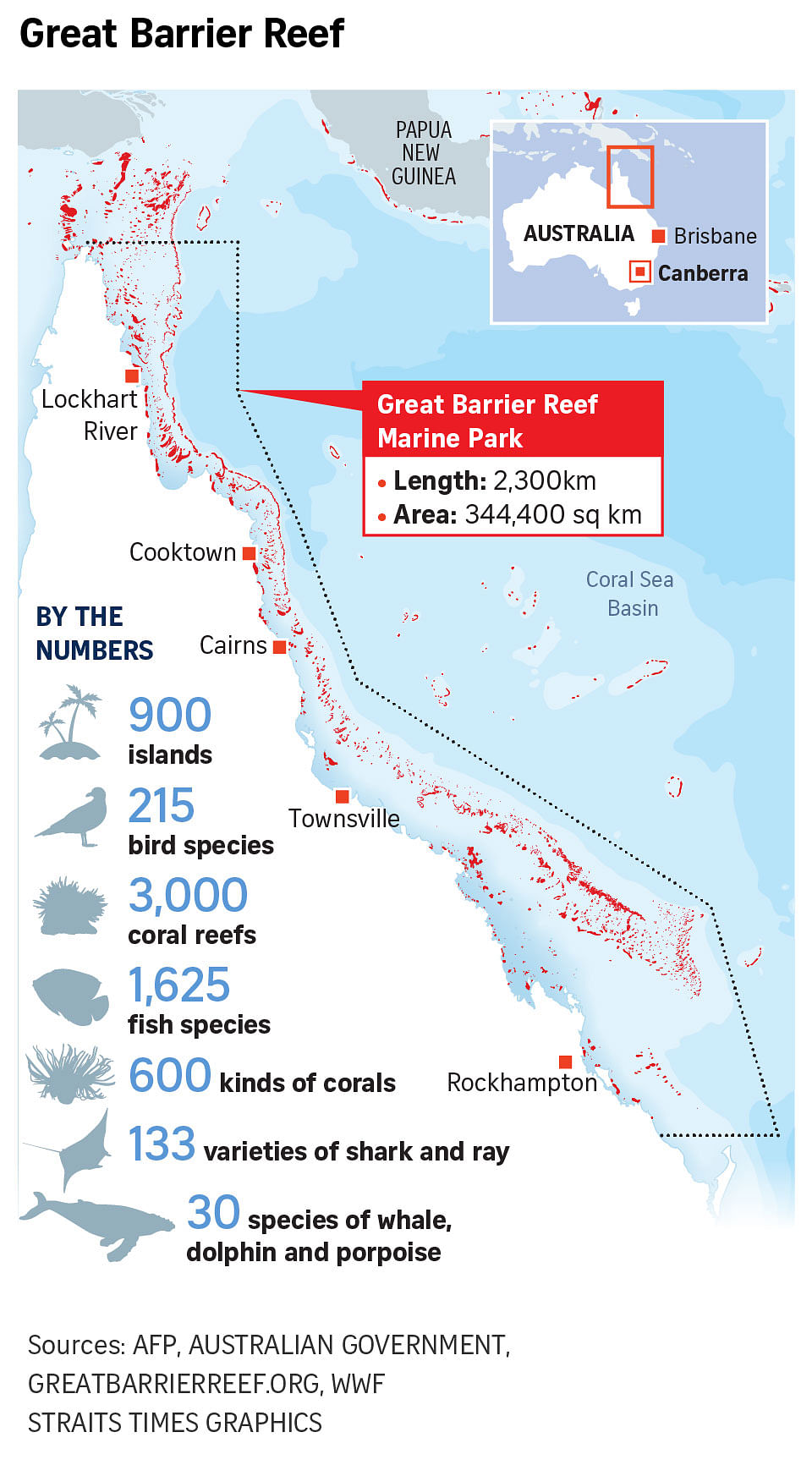SYDNEY - Australia’s Great Barrier Reef has suffered severe coral bleaching, according to new data which raises further concerns about the future of the iconic World Heritage site.
The Great Barrier Reef Marine Park Authority (GBRMPA), the official authority that manages the massive marine park, conducted aerial surveys that found widespread bleaching in the far north and central sections of the 2,300-km reef, including some areas where bleaching had been “severe”.
Further surveys are still being conducted, including over the main tourism areas, where the heat stress is believed to have been less dire and the bleaching may be less severe.
“Bleaching has been detected across the Marine Park - it is widespread but variable, across multiple regions, ranging in impact from minor to severe,” the authority said in an update on Friday (March 18).
The finding follows a series of mass bleaching events in recent years as climate change has led to warmer sea temperatures and underwater heatwaves that are posing a serious threat to the health of the reef. Mass bleaching events had not been recorded until 1998 but have since occurred in 2002, 2016, 2017 and 2020.
The bleaching involves coral expelling the algae that live inside it, which leaves the coral colourless. Bleached corals can die, though they can also recover and survive if conditions on the affected reef ease.
An expert on coral bleaching, Professor Terry Hughes, from James Cook University, said he believed the latest survey data indicates that a sixth mass bleaching event is occurring.
“Ongoing aerial surveys of coral bleaching reveal (so far) a footprint of mass bleaching similar to 2017, when the central 500km region was hardest hit,” he said in a tweet on Friday.
“How many more maps will it take to trigger real reductions in greenhouse gas emissions?”
The GBRMPA said it would not declare a mass bleaching event until all surveys and data analysis had been examined.
The authority’s survey results come just days before the start of a United Nations monitoring mission whose findings will inform a meeting in June that will decide if the reef’s World Heritage status will be downgraded. Such a move could threaten the lucrative tourism industry generated by the reef and would also be humiliating for the federal government.
The ruling Liberal-National coalition has been heavily criticised for its refusal to adopt stronger cuts to carbon emissions, even as the government’s own reef authority warned of the threat that climate change poses to the reef.
The current bleaching is particularly concerning because it is occurring in the midst of a La Niña weather pattern, which typically brings cooler temperatures and cloud and rain that help to cool the reef and prevent bleaching. During the past week, sea surface temperatures in the reef were between 0.5 and 2 deg C above average.
“What is most concerning is that this widespread bleaching is happening during a La Nina weather event,” Dr Lissa Schindler, from the Australian Marine Conservation Society, said in a statement.
“It shows the consistent pressure our reef is now under from global heating. A healthy reef can recover from coral bleaching but it needs time.”
The Environment Minister, Ms Sussan Ley, said the federal government had recently invested an extra A$1 billion (S$1 billion) in the reef to “strengthen its resilience in the face of these challenges”.
“This is the best-managed reef in the world and as a result of our collaborations with scientists, reef managers, traditional owners, farmers and local communities, it is also the most closely monitored,” a spokesman told ABC News.
Last year, Unesco recommended that the reef should be placed on the list of World Heritage sites that are “in danger”. But the proposal sparked lobbying by the federal government which helped to persuade delegates at the UN agency not to downgrade the reef’s status.
Scientists and environmental groups have warned for years that the reef is being seriously threatened by ocean warming, acidification and extreme weather events such as cyclones.
Mr Martin Zavan, from Greenpeace Australia Pacific, said the federal government had thrown “billions at band-aid measures while failing to address climate change, the biggest driver of catastrophic coral damage”.



